
09-01-2026 17:41
Arnold BüschlenHallo, F. dilatata wird von vielen Bryoparasiten

10-01-2026 20:00
Tom SchrierHi all,We found picnidia on Protoparmeliopsis mur

07-01-2026 22:22
 Danny Newman
Danny Newman
Tatraea sp. on indet. hardwood The Swag, Great Sm

10-01-2026 01:18
 Danny Newman
Danny Newman
cf. Neovaginatispora fuckelii on indet. shrub Pre

07-01-2026 10:24
 Danny Newman
Danny Newman
Pezicula sp. on indet. hardwood Appalachian Highl

09-01-2026 10:08
 Blasco Rafael
Blasco Rafael
Hola, en el mismo habitat que la anteriorRetamaDia

08-01-2026 21:22
 Blasco Rafael
Blasco Rafael
Hola, He recogido esta muestra de Orbilia sobre Re

07-01-2026 17:29
 Marc Detollenaere
Marc Detollenaere
Dear Forum,On a barkless Populus I found some smal

10-11-2021 17:33
 Riet van Oosten
Riet van Oosten
Add-on topic http://www.ascofrance.com/forum/7059

07-01-2026 10:05
 Danny Newman
Danny Newman
cf. Chaetospermum on XylariaCosby Campground, Grea
Inoperculate asco on eucalyptus bark
Zuidland Peter,
23-08-2023 07:19
I need assistance with the ID of this inoperculate found on eucalyptus bark in a eucalyptus plantation, SE Victoria, Australia; it was also growing on the old bodies of previous generations of the same fungus.
Hymenium is light coloured but the medullary surface is dark green/grey.
Asci are 99-113 x 10um, with Crosiers and Lugol's +ve.
Spores are hyaline, 10.6 - 14.2 x 3.8 - 4.7um and when germinating they have 1-3 septa.
Iodomidotic reaction -ve.
Many thanks
Peter
Hans-Otto Baral,
23-08-2023 08:44

Re : Inoperculate asco on eucalyptus bark
How large are the apos?
The spores look 100% like in Leptodontidium trabinellum. But the apos look quite different. Also the yellow-brown excipulum is a difference. Do the conidia form on the germinating spores?
Do you have living paraphyses on a photo?
The globose cells look like a parasite?
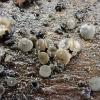
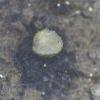
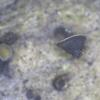
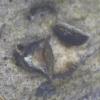
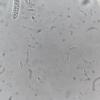
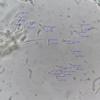
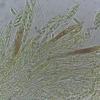
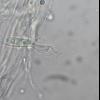
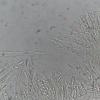
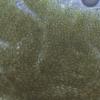
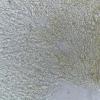
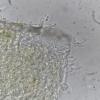
 Globular cells at the rim
Globular cells at the rim